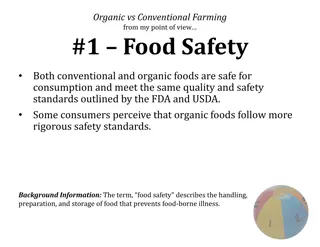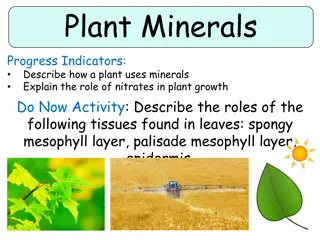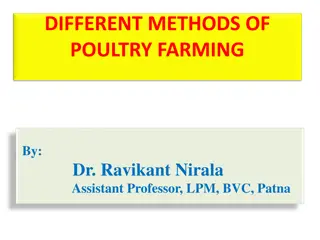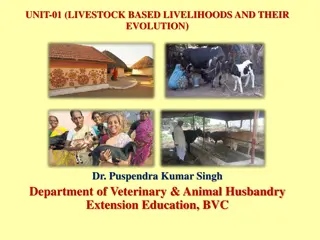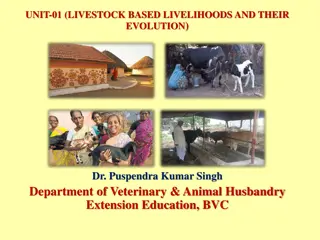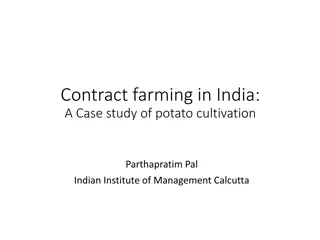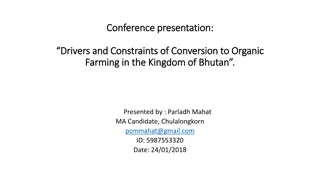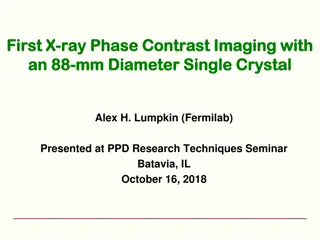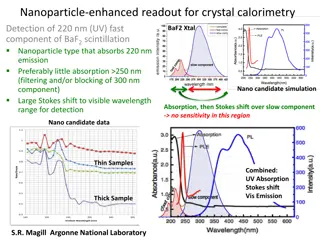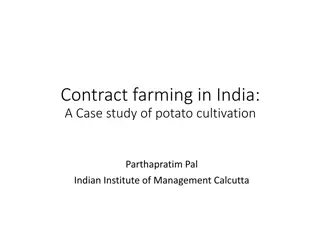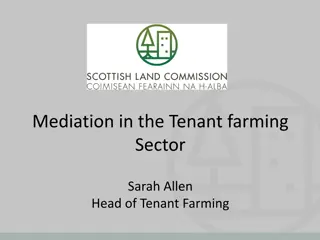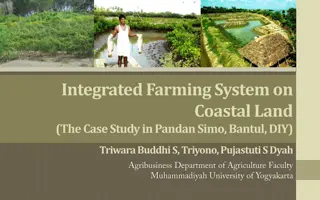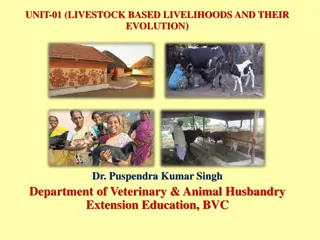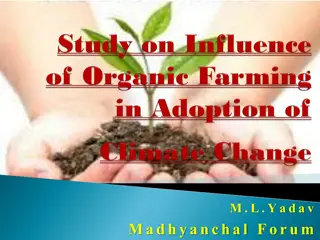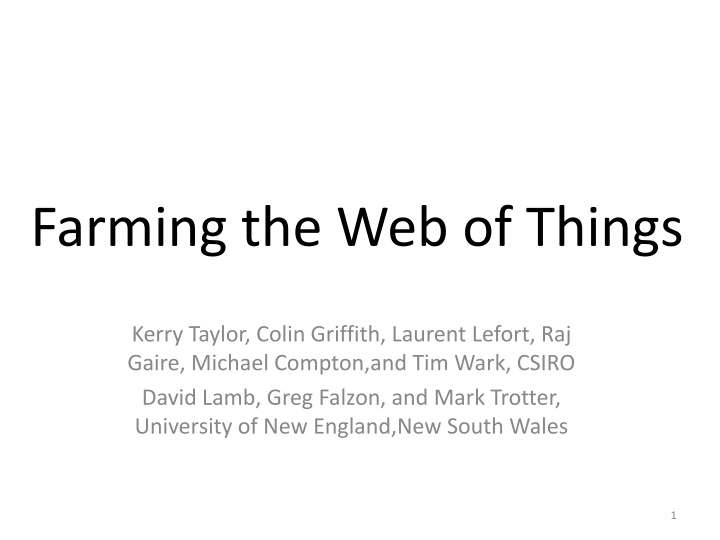
Smart Farming: Enhancing Agricultural Productivity with IoT Technology
Discover how the integration of IoT technology is revolutionizing agriculture in Australia, leading to improved productivity and innovation. This comprehensive guide covers the implementation of environmental sensors, livestock monitoring technologies, and ontology-enabled architectures on smart farms to enhance situational awareness, productivity, and data sharing. Explore the preparation, technology, architecture, barriers, emerging drivers, benefits, and achievements of this transformative approach to farming.
Download Presentation

Please find below an Image/Link to download the presentation.
The content on the website is provided AS IS for your information and personal use only. It may not be sold, licensed, or shared on other websites without obtaining consent from the author. If you encounter any issues during the download, it is possible that the publisher has removed the file from their server.
You are allowed to download the files provided on this website for personal or commercial use, subject to the condition that they are used lawfully. All files are the property of their respective owners.
The content on the website is provided AS IS for your information and personal use only. It may not be sold, licensed, or shared on other websites without obtaining consent from the author.
E N D
Presentation Transcript
Farming the Web of Things Kerry Taylor, Colin Griffith, Laurent Lefort, Raj Gaire, Michael Compton,and Tim Wark, CSIRO David Lamb, Greg Falzon, and Mark Trotter, University of New England,New South Wales 1
Outline Introduction Preparation Technology Architecture-Sensor Architecture-GSN Barriers Emerging drivers Benefit Achievement Conclusion 2
Introduction Primary industry in Australia has a proud record of both remarkable productivity and investment in innovation. An experimental smart farm uses environmental sensors, livestock monitoring technologies, and an ontology-enabled architecture for personal alerts and data sharing. Improving the primary producer s situation awareness. And contributing to on-farm productivity 3
Preparation Telephony and high-speed broadband are available not only in the cities also in the rural farms. Ear tag on each livestock. Landscape variability of the farm. an electromagnetic induction soil scan digital elevation mapping a pasture biomass scan corresponding spatial clustering analysis 4
Architecture 5 5
Architecture - Sensor Soil sensor measures Moisture Temperature electrical conductivity Air temperature sensor GSN (Global Sensor Network) 6
Architecture - GSN A middleware to collect data together and do real-time analysis Personal semantic event description for condition alert Each event description is viewed as a virtual GSN sensor 7
Architecture - GSN 8
Barriers Solved high-speed broadband Cost of sensors and sensor networks. Availability of cloud services. Public awareness and fit-for-purpose apps Data and sensor standards Open data policies and practices Solving User acceptance. Extend farmers capabilities rather than replace them Maturity of software and services industry for agricultural applications. Clear and tangible cost-benefits. 9
Emerging drivers Integration into vertical supply chains Agricultural product and advisory companies move toward digital services. Biosecurity and food safety initiatives Consumer demand for food provenance Rural communities increased use of digital services. 10
Benefit For farmer Food quality by real-time monitoring Prevent the disease and epidemic from livestock For consumer Food safety because of the transparency of the farming process For the world Food quantity because the population grows rapidly 11
Achievement In the first case, the data is interpreted in a very local temporal and spatial context, and the model for interaction aims to extend the farmer s own knowledge In the second case, the publication of open data is intended to drive industry development that might benefit both the farm s productivity and the farming community s social fabric. 12
Conclusion Australia s national broadband rollout brings the major opportunity to restructure the industry around the Web of Things capability with the potential to solve identified industry challenges. Next, we need to undertake the challenging task of quantifying industry-scale benefits. Our analysis might scale internationally, as other large agricultural nations look to invest in rural broadband services 13





